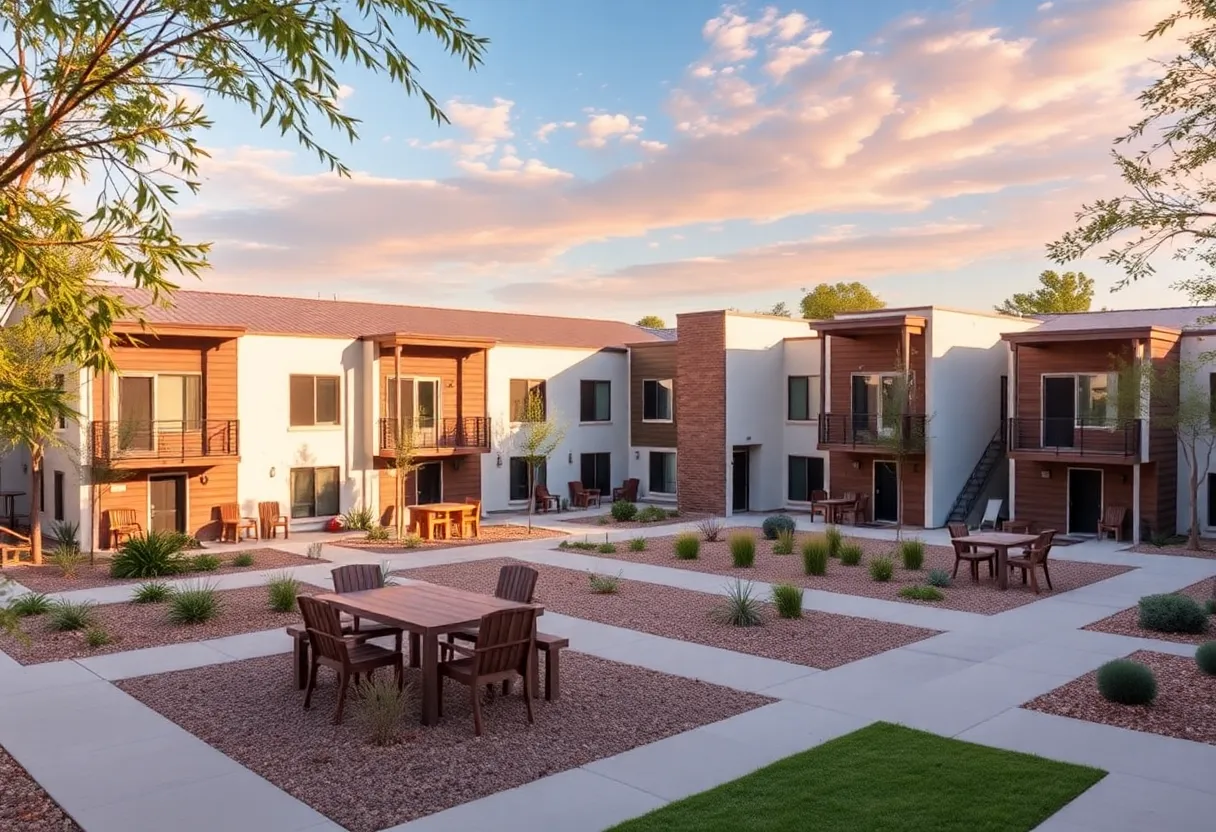Tucson, October 16, 2025
Tucson has inaugurated STAR Village, a new 200-unit transitional housing complex aimed at combatting homelessness. Despite mixed reactions from advocates regarding support services, city officials deem it a step toward addressing this pressing issue. The facility, funded with $15 million in federal grants, offers job training and counseling services, promoting a structured pathway to stable housing. Advocates have voiced concerns over mental health support, underscoring the complexities of serving this vulnerable population. City leaders aim to adapt the program based on community feedback and efficacy.
Tucson Opens Transitional Housing Amid Homelessness Concerns
Tucson has unveiled STAR Village, a new 200-unit transitional housing complex aimed at addressing the city’s homelessness challenges, despite strong pushback from advocates. The facility, funded primarily through federal grants totaling $15 million, represents a significant investment in temporary shelter and support services. City officials marked the opening with a ribbon-cutting ceremony, emphasizing its role as an initial effort to provide stability for unhoused individuals.
Facility Details and Initial Operations
The complex includes a range of support features designed to help residents transition to more permanent solutions. Job training programs are integrated into the daily operations, offering practical skills development to encourage employment opportunities. On-site counseling services are available to address immediate needs, though advocates have highlighted the limited scope of mental health support. Initial occupancy stands at 60% of capacity, with plans in place to gradually increase resident numbers as additional resources become available.
Nonprofits, including Interfaith Community Services, have partnered with the city to deliver comprehensive wraparound support. This collaboration ensures that residents receive assistance beyond basic housing, such as case management and access to community resources. The facility’s design prioritizes safety and accessibility, with communal areas for group activities and private units to foster a sense of independence.
Opposition and City Response
Homelessness advocates have voiced significant concerns about the project’s shortcomings, particularly the perceived insufficiency of mental health services. They argue that without robust psychological support, the facility may struggle to meet the complex needs of its residents, many of whom face underlying trauma or substance use issues. This opposition has been vocal throughout the planning stages, leading to public forums and protests that called for more inclusive design input from affected communities.
City leaders have acknowledged these criticisms while framing STAR Village as a pragmatic starting point. The initiative is positioned not as a complete resolution to Tucson’s homelessness crisis but as a foundational step toward broader systemic improvements. Officials have committed to monitoring the program’s effectiveness and making adjustments based on resident feedback and outcome data. This approach aims to build trust with skeptics by demonstrating adaptability and a focus on long-term impact.
Funding and Development Background
The $15 million funding package was secured through federal grants allocated for housing and urban development projects. These resources covered construction costs, site preparation, and the setup of essential services. The development process spanned several years, involving coordination between city departments, federal agencies, and local nonprofits. Site selection in Tucson was chosen for its proximity to existing social services, public transportation, and employment hubs, facilitating easier access for residents.
Prior to the opening, community engagement efforts included town halls where stakeholders discussed the project’s goals and challenges. The city’s homelessness strategy has evolved over the past decade, with increasing emphasis on transitional models like STAR Village to bridge gaps in permanent housing availability. This facility is part of a larger portfolio of initiatives, including outreach programs and policy reforms aimed at reducing street homelessness by 20% over the next five years.
Expected Community Impact
Proponents anticipate that STAR Village will alleviate pressure on emergency shelters and reduce visible homelessness in high-traffic areas. By providing structured support, the complex could enable residents to secure jobs and stable housing more quickly, potentially lowering overall public costs associated with untreated homelessness. Early metrics will track occupancy rates, program participation, and successful transitions to independent living.
Challenges remain, including staffing the facility adequately and integrating it with broader mental health networks. The city has outlined plans for quarterly evaluations to assess progress and address gaps. Neighboring communities have expressed mixed reactions, with some welcoming the investment in social infrastructure and others concerned about potential increases in local traffic or resource demands.
Broader Context in Tucson
Tucson’s approach to homelessness reflects national trends in urban housing policy, where federal funding plays a pivotal role in scaling solutions. The city’s efforts align with initiatives to combine housing with supportive services, a model shown to improve outcomes in similar projects across the Southwest. As STAR Village ramps up operations, it will serve as a case study for balancing rapid deployment with comprehensive care, informing future developments in the region.
The opening underscores the ongoing tension between immediate action and holistic reform in addressing social issues. With 200 units now available, Tucson takes a tangible step forward, even as debates continue on how to best serve vulnerable populations.
FAQ
What is STAR Village?
STAR Village is a 200-unit transitional housing complex in Tucson funded by federal grants.
How much did STAR Village cost?
The facility cost $15 million, covered through federal grants.
What services does STAR Village offer?
STAR Village includes job training programs and on-site counseling.
What is the current occupancy of STAR Village?
Initial occupancy is at 60%, with plans to scale up.
Who is partnering with the city on STAR Village?
Nonprofits like Interfaith Community Services are partnering to provide wraparound support for residents.
What concerns have been raised about STAR Village?
Critics argue it lacks sufficient mental health services.
Key Features of STAR Village
| Feature | Description |
|---|---|
| Units | 200 transitional housing units |
| Funding | $15 million from federal grants |
| Programs | Job training programs |
| Services | On-site counseling |
| Occupancy | Initial 60%, plans to scale up |
| Partnerships | Interfaith Community Services for wraparound support |
| Concerns | Lacks sufficient mental health services |
Deeper Dive: News & Info About This Topic
HERE Resources
Tempe Microburst Displaces Residents and Causes Power Outages




